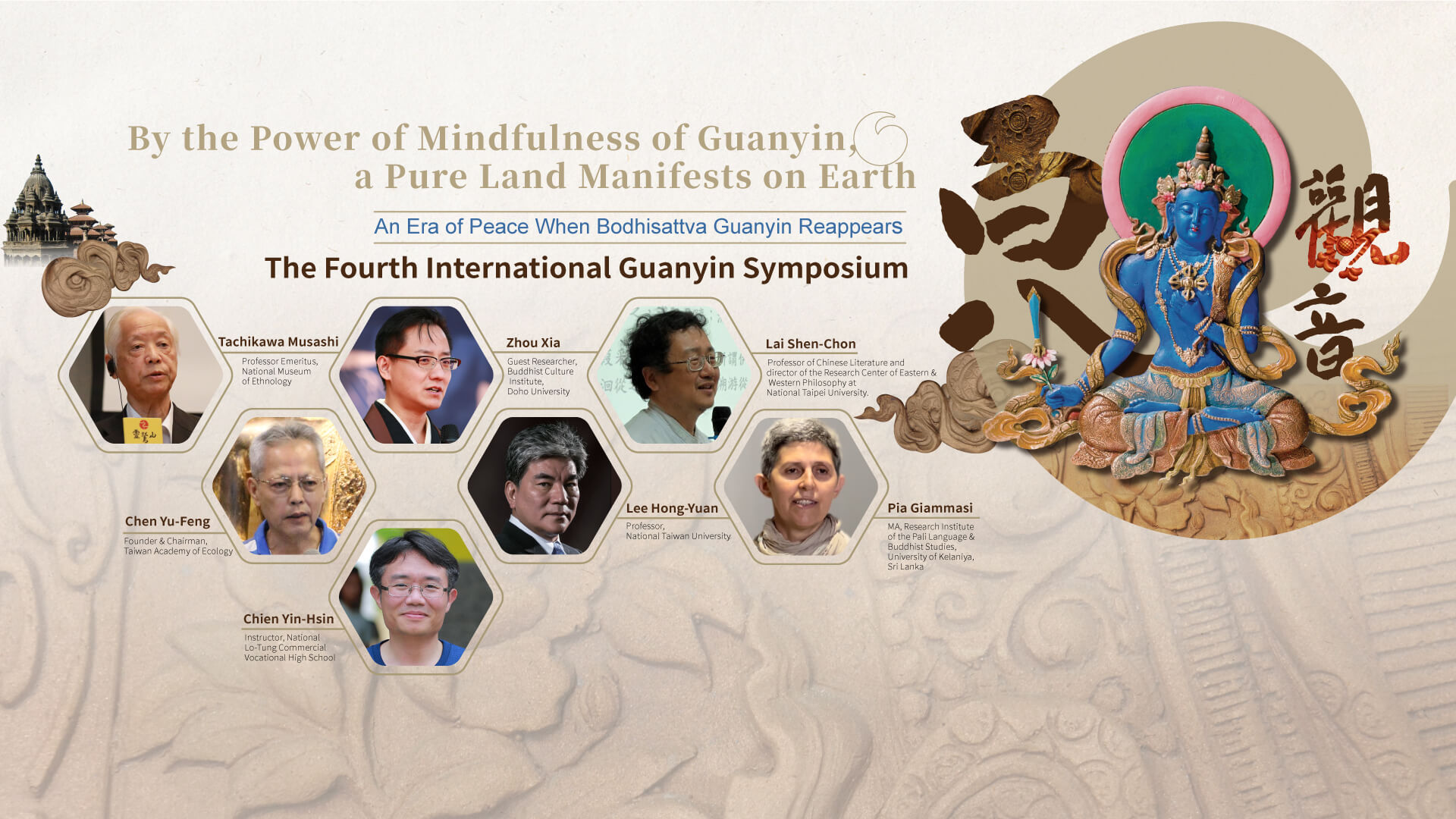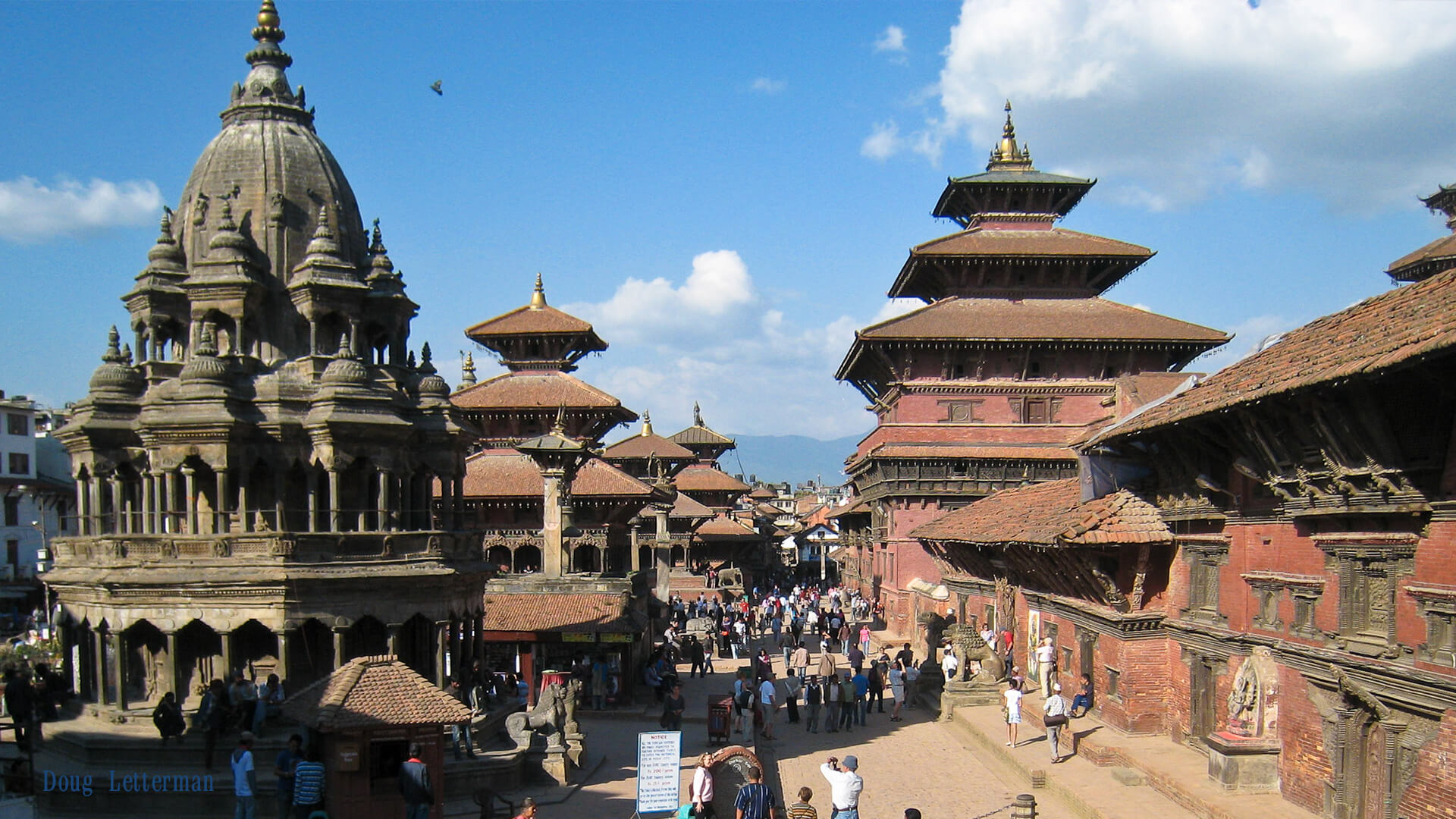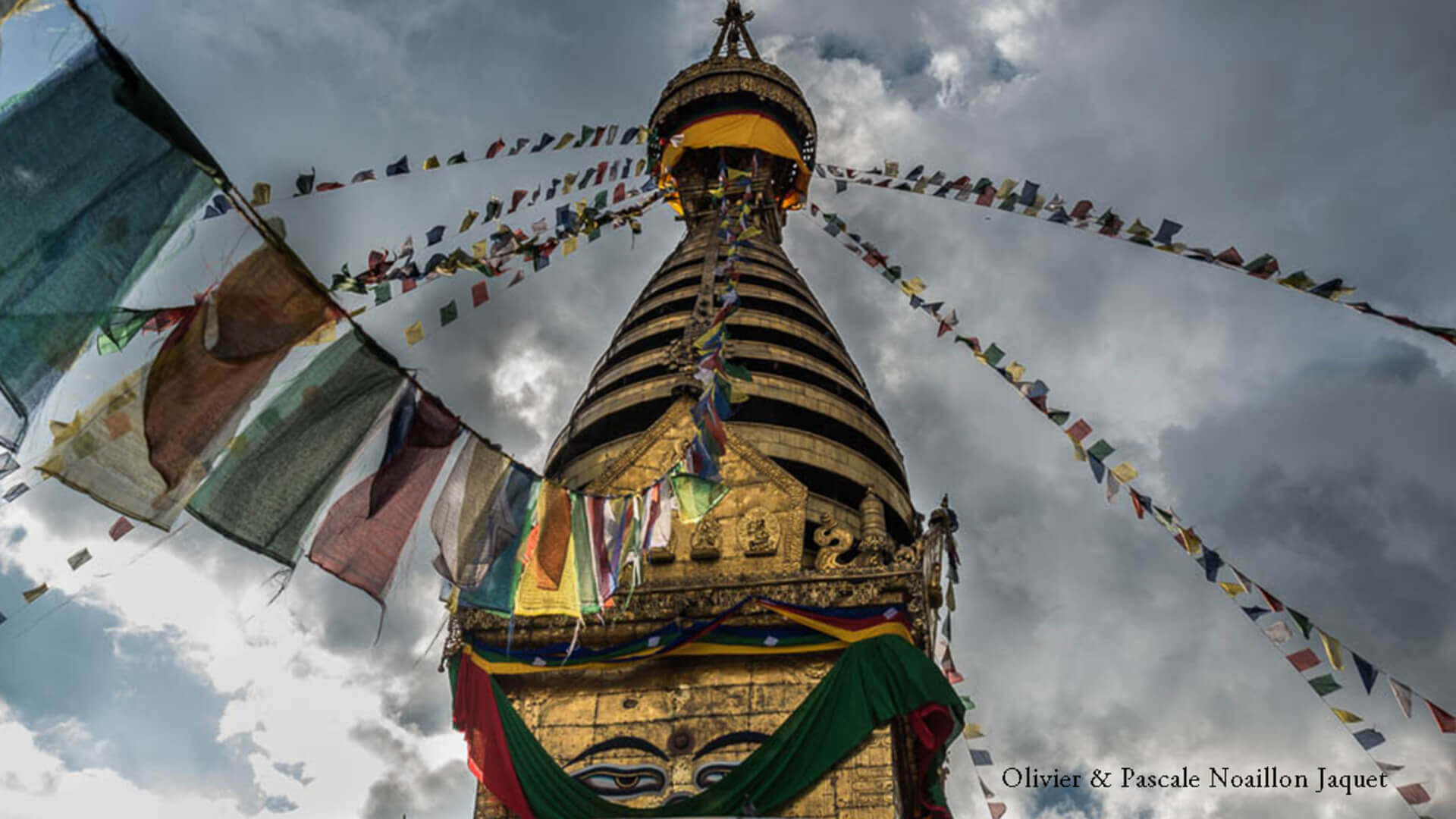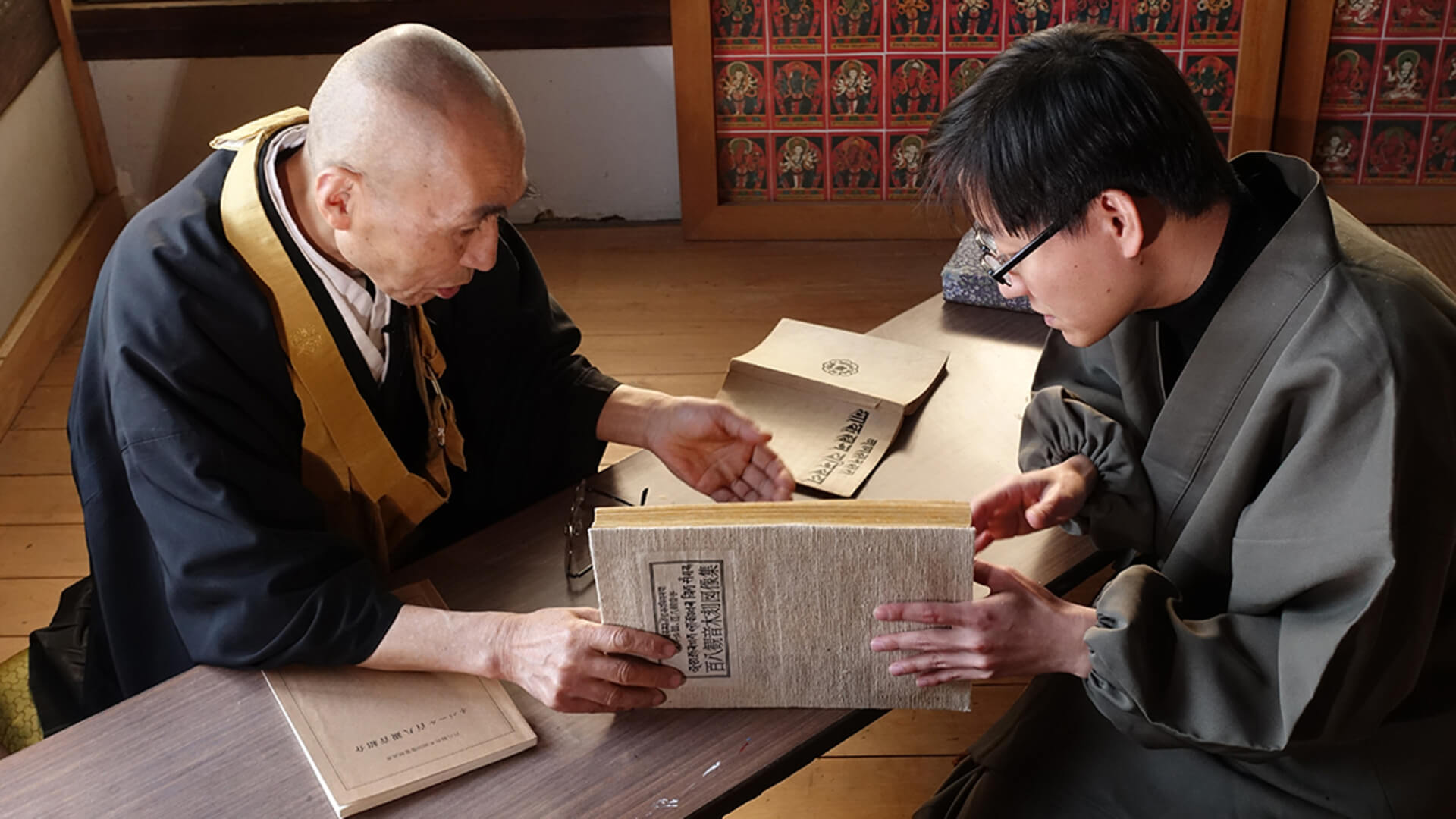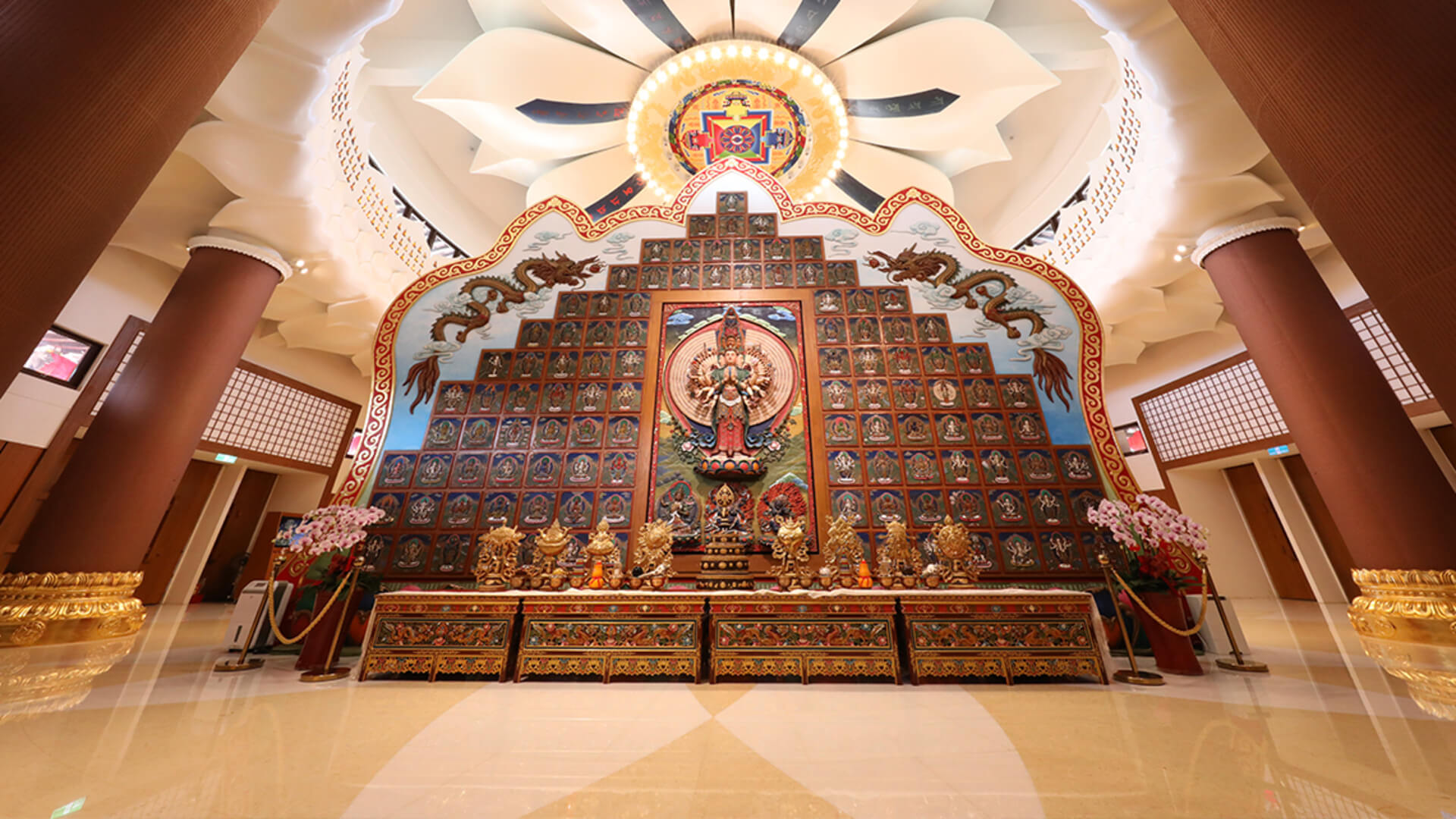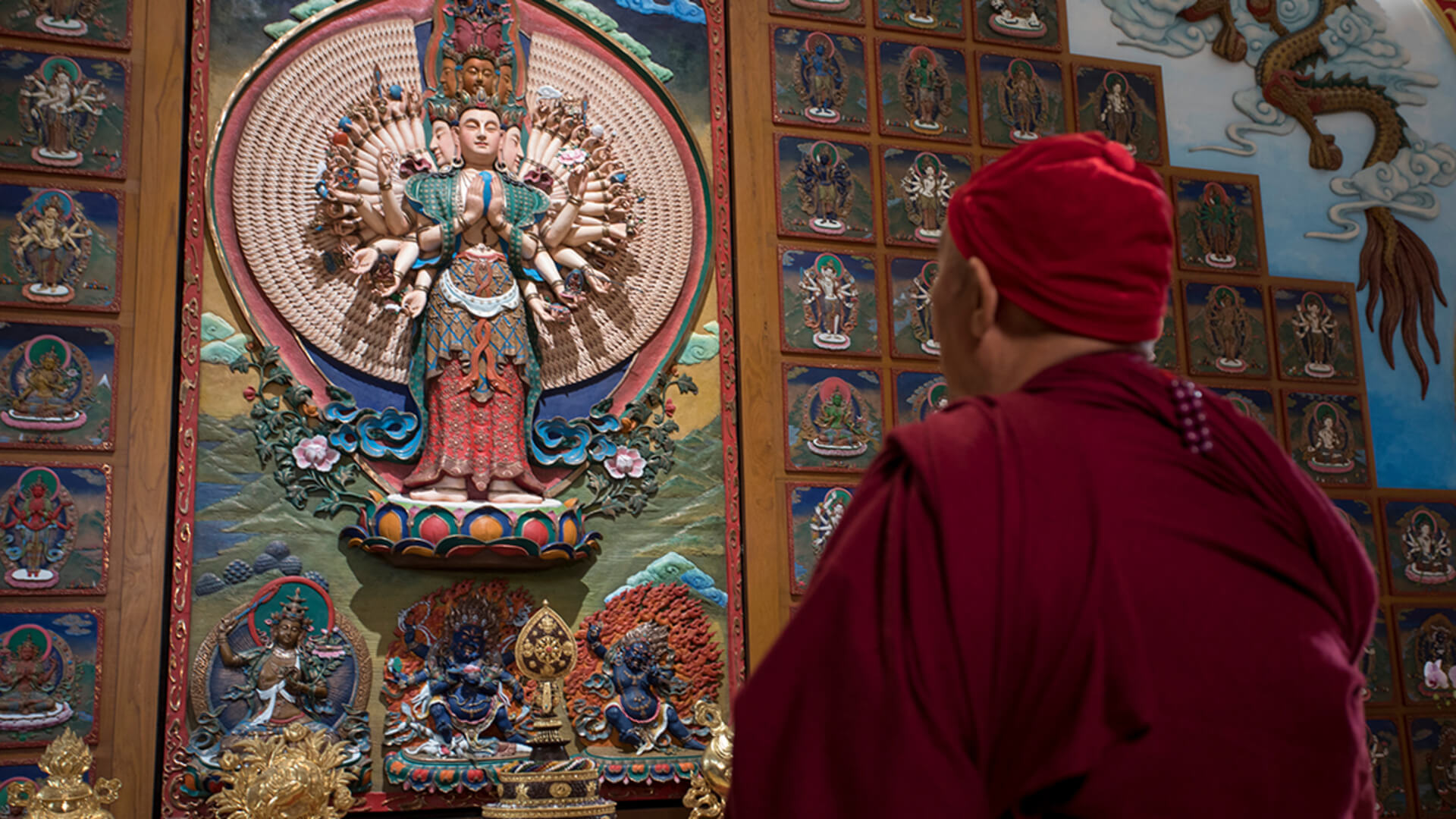I. Background
It All Begins with Listening to the Silence
Starting in 2020, the fear of COVID-19 went global and it seemed that the ‘Pause’ button was pressed to make people halt and learn how to deal with the stillness. Ironically, thanks to the lingering pandemic, our off-balance, and feeble Earth got a rare break for self-healing from excessive depletion of material resources. Humankind’s insatiable greed and wanton desires have finally given rise to an ultimate imbalance of our home planet, disturbing the operation of the four universal elements— earth, water, fire, and wind - to plague the Earth.
The pandemic put to test how humankind seeks to secure inner stability amidst such drowning anxiety. Frustrated and powerless, people tried to listen, listening with heart and mind, and listening to the silence. It is exactly through listening to the soundless quiet that we better appreciate the sound itself. Once we realize the fact that ‘being’ is indeed part of the ‘emptiness’, our fear of annihilation disappears. We shall appreciate that silence is full of power, and love, kindness, and compassion can be detected therein. In the English language, the two words ‘listen’ and ‘silent’ are spelled with exactly the same letters. We listen to the sound, and we listen to the silence - the soundless space between two sounds - too. When we live in the moment and listen to the passage of each moment, our thinking becomes wide open just like a verse in a poem by Dylan Thomas that ‘The force that through the green fuse drives the flower’.
We believe in such power and we trust that it manifests the power of creation – i.e. creativity and spirituality – especially when COVID-19 shook the world to its core and the overall running game rules collapsed. When it becomes impossible to find peace anywhere on the outside, the drive inward gets ever more powerful to secure peace of mind, a quiet moment right there and then, and a way - any way - to calm down. Such are the markings of a grand beginning. Thus accordingly, listening to the silence means a strong reminder to retrieve one’s own genuine capability of ‘healing the mind by listening’. Silence does not equate emptiness, but rather the unison wherein we ourselves and all other forms of being exist at once. We are among the sentient beings, and we strive for a diversified symbiosis as we depend upon one another for our co-existence. Thus we are free of fears and worries and we have peace of mind. Such realizations are what it takes to keep the Earth safe, people spiritually stable and abundant in terms of sustainability.
Perfecting the Hearing Organ to Perceive All Calls of the World
Listening to the silence to achieve inner peace is a similar approach to the Dharma practice of ‘Perfecting the Hearing Organ’, through which Bodhisattva Guanyin attained the ultimate realization of both love and compassion. The Bodhisattva, therefore, is able to manifest himself in whatever form required to benefit sentient beings, sharing Buddha's teachings and liberating them from suffering. It is said that the Bodhisattva has demonstrated 32 forms of body to the sentient beings calling for his blessings. The Lotus Sutra unveiled that the number of Bodhisattva Guanyin’s incarnations can be up to one hundred billion as he shows up in countless places to help the crowds. The Shurangama Sutra also states that ‘I was able to receive Buddha’s teaching of the Samadhi of discerning all things to be an illusion because of my offering to Bodhisattva Guanyin.’ Moreover, the offering generated ‘the fourteen fearlessness’ that all sentient beings can be free of fears and worries. The Bodhisattva's mercy has pervaded each and every sentient being and whether or not a Buddhist. He is forever with you - in your mind and in your heart - to relieve you of suffering and remove people’s fear to allow lasting peace.
Bodhisattva Guanyin is often referred to as the ‘Guanyin Mama’ to stand for the female compassion and motherly love coined in the everlasting endearment of the one word we all first say - Mama. The one word in our mind in our darkest hours that is forever associated with unconditional giving and selfless sheltering no matter what. But mothers of this world are mortals and have their limits. No so for Bodhisattvas. Guanyin symbolizes motherly love and compassion and assumes a deified function capable of liberating all sentient beings. A supernatural deity, Guanyin commands limitless power and liberates all of those who call for her help. Such closeness and accessibility have enhanced her popularity over time. The Guanyin belief as a faith spreads out to the furthest in the universe.
By the Power of Mindfulness of Guanyin, a Pure Land Manifests on Earth
The merciful and compassionate Guanyin manifests in our mundane world to teach us how to love and be compassionate to all sentient beings. The Vimalakirti Sutra notes that ‘As the mind purifies, so does the Buddha land.’ People of the modern age, however, are in the face of natural disasters and manmade adversities one after another and remain restless and in fear. Only the power of Guanyin’s compassion and peace can unite sentient beings, and the power of such healing resonance will do good to alleviate the crisis beleaguering our Earth. Guanyin’s compassion knows no difference when it comes to race, faith, and possessions. As long as there is love, anyone can be a manifestation of Bodhisattva Guanyin.
For the inaugural international Guanyin symposium, the theme was based on the iconography of the 108 Forms of Lokesvara for an in-depth discussion of the topics and discourses. The second and third symposia were orchestrated efforts in exploring the evolution of the Guanyin culture over space and time.
An Era of Peace When Bodhisattva Guanyin Reappears
With and at the Fourth International Guanyin Symposium, it is our sincere hope to reflect upon the suffering and adversities people have been going through and ponder whether the ‘Pure Land’ is ever to be discovered? How do we define the ‘Guanyin Pure Land’ and the ‘Worldly Pure Land’? We are looking forward to submitting some concrete action plans to help avert ecological crises, making possible the reappearance of the Guanyin spirit to enable an era of peace in the New Normal after the Covid-19 pandemic.
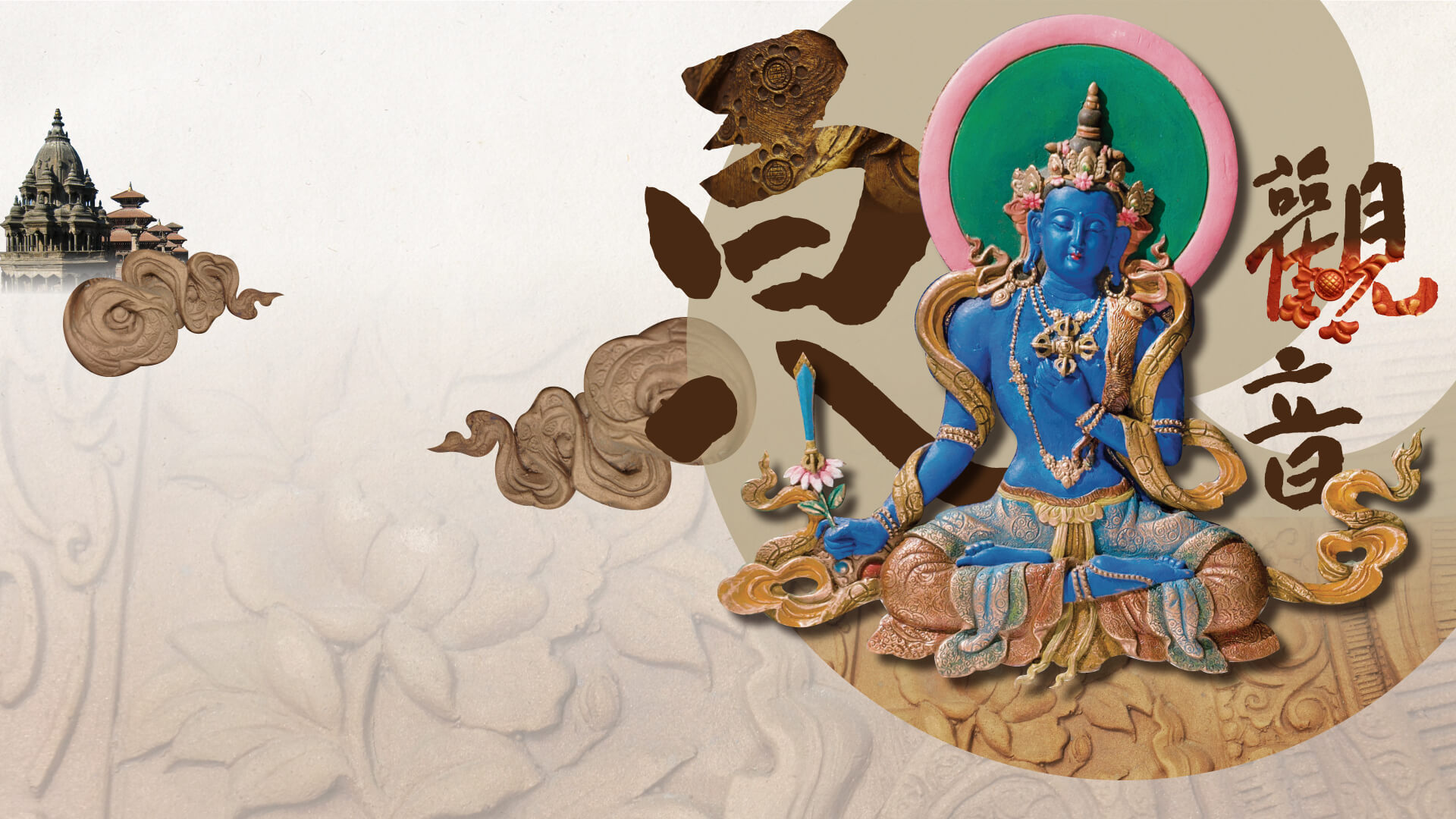
Presenters & Paper Highlights
II. Thematic Treatment
(I) Theme:
By the Power of Mindfulness of Guanyin, a Pure Land Manifests on Earth
An Era of Peace When Bodhisattva Guanyin Reappears Online
Objective
We start out from Bodhisattva Guanyin’s spirit of compassion to communicate the power of compassion and love blessed by the mother goddess in unconditional streaming of love and care 24/7, which is comparable to how maternal nursing is given via the umbilical cord. It might have been too long for us to remember what basic gratitude feels like in recognizing the gift of life from Nature over our mothers to us. We hope to help raise the level of awareness that our Mother Earth is depleted and wounded all over, running a high fever leading to climate change. We aspire to contemplate the ultimate meaning of the Earth Pure Land from the viewpoint that ‘the Pure Land in which one can be free of afflictions in mind is the Pure Land of Guanyin.’ We, therefore, propose to address ecological issues with concrete actions enlightened by Bodhisattva Guanyin’s teachings and invite the world to create ‘an era of peace’ to keep the Earth safe in sustainability.
(II) Subjects:
The Buddhist view of the ‘World’
Where Guanyin is – Pure Land vs Soiled Land
Perceive the world’s ‘sounds’ – reciting the name of Buddhas, chanting mantras, perceiving the sound, meditating, and listening to the silence
The power of reciting the name of Bodhisattva Guanyin– the practice of ‘Perfecting the Hearing Organs’, Peace Meditation, and Spiritual Ecology
The Earth Pure Land – ‘The world is at peace when the mind is at peace.’ The practice of ‘Respect, Inclusion, and Love’. The implementation of ‘Spiritual Ecology’.
III. Time:
●Wednesday, September 28, 2022
Taiwan Time: 10:00-18:00
Japan Time: 11:00-19:00
IV. Venue:
● Taiwan Venue: 3F, Shan Fa Building, Sheng Shan Temple of the Ling Jiou Mountain Monastery
● Japan Venue: ANNEX, the Municipal Theater of Music, Nagoya
V. Format:
The event will be proceeded both online and onsite.
VI. Organizers and Co-Organizers
● Supervisor: New Taipei City Government
● Organizers: LJM Buddhist Foundation, LJM Wu-Sheng Monastery
● Curators: Worldwide Association of the 108 Forms of Avalokitesvara, the Preparatory Office of the University for Life & Peace, and Shyushi Institute in Japan the Doshisha University (the Dodai) in Japan
VII. Contents
A. Presentation of Papers
Tachikawa Musashi / Professor Emeritus, National Museum of Ethnology
Zhou Xia / Guest Researcher, Buddhist Culture Institute, Doho University
Lai Shen-Chon / Professor of Chinese Literature & Director, Research Center of Eastern & Western Philosophy, National Taipei University
Pia Giammasi / Master of Pali & Buddhist Studies, University of Kelaniya, Sri Lanka
Chen Yu-Feng / Founder & Chairman, Taiwan Academy of Ecology
Lee Hong-Yuan / Professor of Civil Engineering, National Taiwan University
Chien Yin-Hsin / Instructor, National Lo-Tung Commercial Vocational High School
B. Panel Discussion: How the Guanyin Spirit Helps Moderate the Ecological Crises of Our Time
●Forum Host : Lin Mei-Rong, Zhou Xia
●Panelists:
Tachikawa Musashi, Zhou Xia, Torayama Gishuh, Lai Shen-Chon, Pia Giammasi, Chen Yu-Feng, Lee Hong Yuan, Chien Yin-Hsin
VIII. Program Contents & Presenters
● Wednesday, September 28, 2022
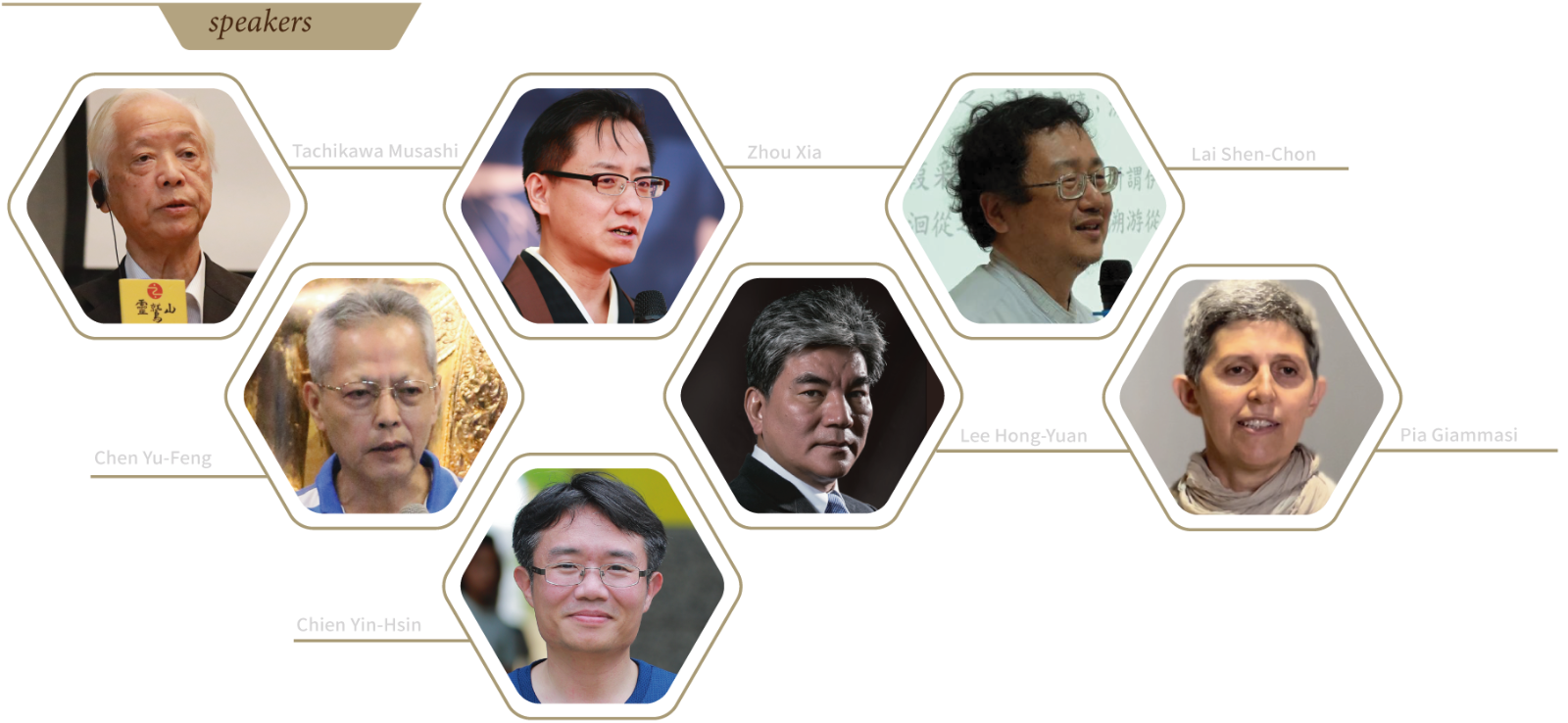
.png)
Presenters & Paper Highlights

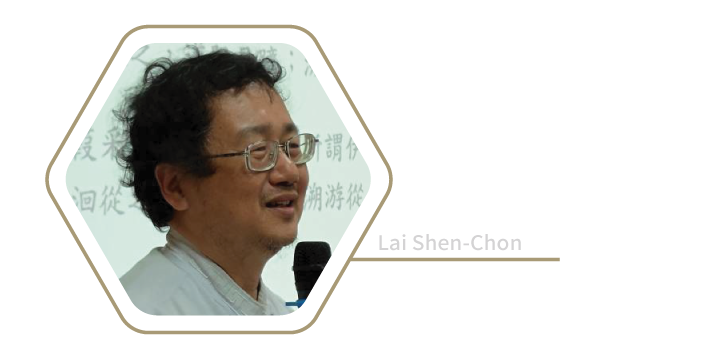
Lai Shen-Chon, born in 1962 in Taipei, is a citizen of Taiwan.
Lai is presently a professor of Chinese Literature and director of the Research Center of Eastern & Western Philosophy at National Taipei University. Holder of a Ph.D. degree from National Taiwan University, Lai was further awarded a Ph.D. degree of Philosophy from Ludwig-Maximilians University of Munich, Germany, in 1988.
Lai headed the Department of Chinese Literature and the Graduate School of Chinese at National Taipei University from 2005 to 2012. He chaired the Taipei Society of Taoist Alchemy as the fifth Chairman, and was the editor-in-chief of the THCI Core Journal Thought & Speech - A Magazine of Research Work on Humanities & Social Science from January, 2001 to December, 2002.
Lai is a prolific author with twenty-plus academic titles including Hermeneutics of Buddhism (Beijing, Beijing University Press, 2009), Cross-Cultural Communications between Heidegger and Zen Practitioners of Taoism (Beijing, Religion & Culture Press, 2007), and Aesthetics of Milieu & Hermeneutics (Beijing, Beijing University Press, 2009).
 Ecological Philosophy of Buddhism from a Cross-Cultural Viewpoint: A Reflection on the Tian-Tai Philosophy of Phenomena and Universe
Ecological Philosophy of Buddhism from a Cross-Cultural Viewpoint: A Reflection on the Tian-Tai Philosophy of Phenomena and Universe
Hua-Yen and Tian-Tai Schools are two representatives of Buddhist philosophy in East Asia. The present paper bases itself on Tian-Tai Buddhism but involves the Hua-Yen school of thought in its discussion of ecological philosophy in Buddhism from a cross-cultural perspective, especially zooming in on Bodhisattva Guanyin’s teaching on meditation. The discussion aims to create a dialogue of ecological notions among the Chinese Taoist thinking, the Japanese philosophy of the Kyoto School, and German Theology.
The three sections of the paper serve to expand on the following points:
1. Combing through the theoretical sources and the root cause that gave rise to disputes amongst environmentally active Buddhists in Taiwan;
2. Propounding in depth an ecological theory features both the Hua-Yen Contemplation of Dharma Realm and the Tian-Tai Philosophy of Phenomena & Universe;
3. Interpreting ecological philosophy from a cross-cultural perspective and its meaning to Buddhism.
The first section of the essay attempts to comb through disputes between environmental protection theories that respectively proclaim ‘mind only’ and ‘equal weight to both mind and realm’. Tracing back to the root cause through theory sources of both parties and by way of reverse thinking, the paper places arguing schools of Buddhist thought in their respective places in a juxtaposition corresponding to the four nodes of environmental ecology.
The second section goes into detail to expand on the profound ecological theory that prioritizes both the mind and the realm in the Tian-Tai Buddhism. Three dialectics are highlighted philosophically, ideologically, and in terms of its value ecologically to unfold the significance of Tian-Tai Buddhism when it comes to ecological philosophy.
The final section comes up with a host of topical issues relevant to the present paper gleaned from Chinese Taoist thinking, Japanese philosophy of the Kyoto School, German thoughts from the philosophical and environmental circles, in the hope of contributing to the current build-out of environmental Buddhism in Taiwan towards a cross-cultural dialogue of ecological philosophy thus facilitated.
Keywords:
Ecology,Environmental Ethics,Tian-Tai Buddhism,Taiwanese Buddhism ,Hua-Yen Buddhism

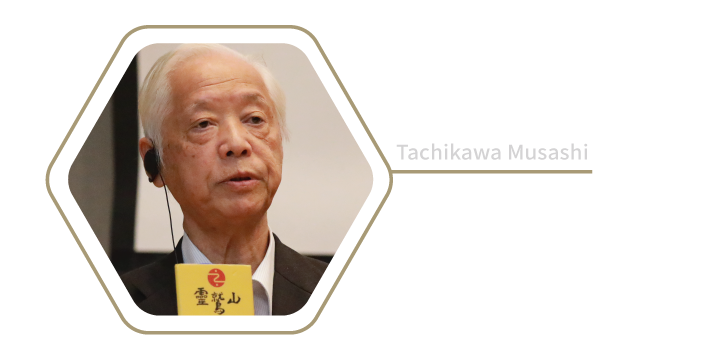
Professor Tachikawa Musashi
▎Education
Department of Philosophy (Indian Philosophy), College of Literature, University of Nagoya
MA, College of Literature, University of Nagoya
Ph.D. of Indian Studies in Sanskrit, Harvard University, USA
Doctoral dissertation at Harvard: The Structure of the World in Udayana’s Realism
Doctoral dissertation at Nagoya University: The Ideology of Mulamadhyamakakarika (MMK)
▎Work Experiences
Lecturer, College of Literature, University of Nagoya
Assistant Professor, College of Literature, University of Nagoya
Visiting Researcher Overseas assigned by Japan’s Ministry of Education to universities abroad (Harvard, Toronto, Vienna, and Pune)
Co-Researcher, Institute of African-Asian Languages & Cultures, Tokyo University of Foreign Languages
Assistant Professor, Research Division II, National Museum of Ethnology
Guest Professor, University of California
Professor, College of Literature, University of Nagoya
Professor, Research Division V, National Museum of Ethnology
Guest Professor, University of Chicago
Professor, Department of Literature Research Science, Graduate University for Advanced Studies (SOKENDAI)
University Auditor, Graduate University for Advanced Studies (SOKENDAI)
Professor, Ethnic Society Research Division, National Museum of Ethnology
Guest Professor, Leiden University, the Netherlands
Guest Professor, Bonn University, Germany
Guest Professor, Graduate School of Chubu University
Professor, College of Literature, Aichi Gakuin University
Professor Emeritus, National Museum of Ethnology
Professor Emeritus, Division of Cultural Research, Graduate University for Advanced Studies (SOKENDAI)
▎Fellowships & Societies
Committee member, Japanese Association for Tibetan Studies
Standing committee member, Association of Tibetan Buddhist Iconography
Councilor, Society of Buddhist Ideology
Board member, Tokai Association of Indian and Buddhist Studies
Board member, Japanese Association of Indian and Buddhist Studies
Board member, The Nippon Buddhist Research Association
Board member, Japanese Association for Religious Studies
Board member, Japanese Association for South Asian Studies
▎Awards
The third Asia-Pacific Special Prize from Mainichi Newspapers
The 50th Chunichi Culture Prize from Chunichi Newspapers
The 11th Nakamura Hajime Eastern Study Prize from the Eastern Institute
Medal with Purple Ribbon
Order of the Sacred Treasure

The Buddha Body & His Worldly Abode
Amitabha & Mahavairocana
Comparing Master Shinran’s The Hymn of True Faith with Master Kukai’s One's Body into the Realm of Enlightenment
In The Hymn of True Faith, Master Shinran addressed the issue of death directly via Buddha Amitabha of the Pure Land of the West. Master Shinran held the view that Buddha Amitabha purified the deceased from the outside as a transcending supernatural being, thereby placing no extra emphasis on the secular world but reserving it for how the deceased would be granted peace post-mortem.
Master Kukai viewed the body of Mahavairocana as the composite universe made up of six components. The view suggested that the world has been deified, which strikes a similar chord to the view advocated by Mahayana Buddhism about the reality of all phenomena. Master Kukai subscribed to the notion that Mahavairocana exists inside the universe to purify the world from within.
The fact that viewing Buddha Amitabha as a supernatural being with a perspective of mortality and Mahavairocana as existing inside the universe to purify from within are no two opposing or even conflicting sides. They are mutually interdependent instead.

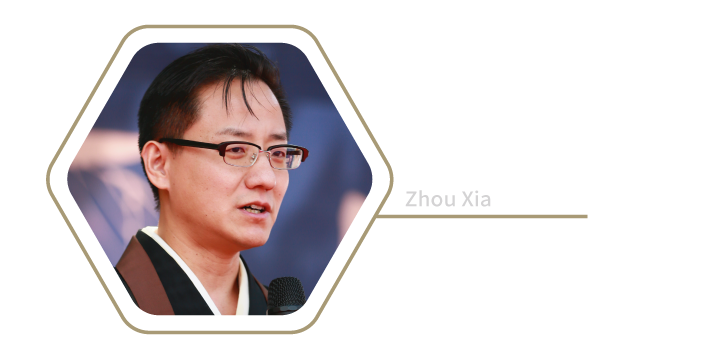
Professor Zhou Xia
Guest Researcher, Buddhist Culture Institute, Doho University
Board member, Shyushi Institute
Education:
BA and MA, University of Nagoya, Japan
Ph.D, Aichi Gakuin University
Specialty:
Sanskrit Documentology, Indian Philosophy, the History of Indian Thought, Buddhist Documentolopy, and the History of Buddhist Thought
A Chinese scholar residing in Japan and a translator of critical Buddhist canons. The Avatamsaka Sutra is Zhou’s focus of research. He has been living and working in Japan for more than twenty years and has fully mastered the Japanese language. Zhou is well-known for his research in comparing, editing, and compiling Buddhist classics. He also enjoys a reputation in the research of thought of the Avatamsaka school.
Zhou studied under noted scholars including Professor Tachikawa Musashi, Professor Toshihiro Wada, who is known as a logic expert, of the University of Nagoya, and Associate Professor Junya Mube as an expert of Sanskrit grammar. In his undergraduate study, Zhou worked on the main classics of the six schools of Indian philosophy and the main Jain classics to gain an in-depth understanding of Indian thoughts from the standpoint of documentology. He was an assistant to Professor Tachikawa Musashi in the latter’s research on Indian Brahmin Huma Rituals. Succinctly, Zhou’s academic focus remains on the formation of the thought of the Avatamsaka school in Buddhism and research of which from the viewpoint of documentology.
Zhou’s doctoral dissertation primarily records special features of the thought of the Avatamsaka school during its formative years, as well as special points of interest of development after its introduction into China. The dissertation also zoomed in on Bodhisattva Samantabhadra’s Ten Great Vows, arguing that the thought of the Vows took shape on Chinese soil and as such is born out of the development of Buddhism in China. The paper included an academic analysis of how the seven branches of Indian Buddhism became adopted and developed in Mahayana Buddhism. In the category of documentology, Zhou proof-read and compiled the Tibetan-Chinese version of the Avatamsaka Sutra, and the Sanskrit-Chinese-Tibetan version of the Ode to Samantabhadra’s Great Vows, which is deemed the most precise and complete version to-date.
Zhou’s published academic papers include The formation of thought of the Avatamsaka School in Buddhism, The buddhas & the world of the Avatamsaka Sutra, The formation of Samantabhadra’s Great Vows regarding the Seven-Branch Offering Prayer, and the Ten Great Vows, A Research on the Diamond World Mandala, A research on the Sanskrit version of the Ode to Samantabhadra’s Great Vows in Sanskrit scriptures, Bhadracarīpra idhāna and Avata sakasūtra, This Side & That Side – The Avatamsaka Universe & The Pure Land of Ultimate Bliss, The notion of Liberation of Mahayana Buddhism - the Avatamsaka Sutra & Vows, Japanese behaviors after the mega quake - fusion and changes of Buddhism the Japanese way, A research on the statue of the Heaven King in Cave 15 of the Yulin Grottoes, Tsongkhapa’s interpretation on No-self and No-nature.

It is commonly accepted among the followers of Amitabha that the world of the Ultimate Bliss is solemn and pure. They hold onto the notion that ‘the secular world is unclean, and the Ultimate Bliss world is a Pure Land’. However, the concept of ‘Pure Land’ in the Avatamsaka Sutra may allow variables.
The Avatamsaka Sutra does not clearly lay out whether the secular world is pure. The perception of whether the secular world is pure or not depends on the view of the beholder. According to the Chapter of Entering the Dharma Realm, to deem the secular world pure hinges on the prerequisite of sufficient positive karma. For the Amitabha Pure Land followers, however, sufficient positive karma is something that they must create to be reborn in the Pure Land in the after-life. Modern followers of the Avatamsaka Sutra, therefore, can arm themselves with a proactive mindset without having to wait for an uncertain afterlife, but endeavoring to transform the secular world into a present Pure Land.

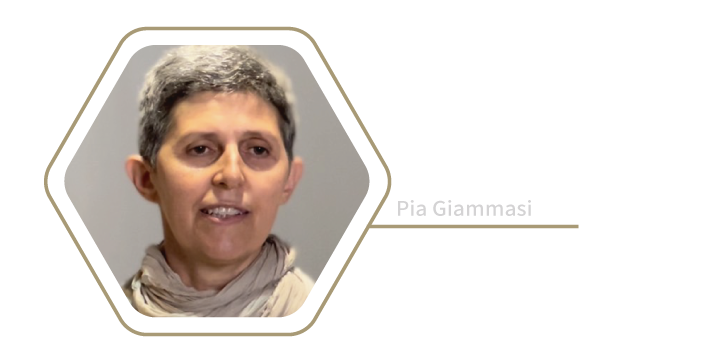
Pia Giammasi
Born in 1964 in Italy and grew up in the USA.
Graduated from the MIT Law School.
Diploma for Traditional Chinese Medicine (TCM) & Acupuncture, Department of TCM, University of Xiamen, China
MA, Research Institute of the Pali Language & Buddhist Studies, University of Kelaniya, Sri Lanka
Upon graduation from the MIT Law School, Giammasi traveled to Asia in search of the wisdom of the East. Formally indoctrinated in Buddhism in Nepal and India, she was dispatched as a lecturer to a Buddhist Center in Hong Kong.
It was in Hong Kong and in early 1989 that she made the acquaintance of Master Nan Huai-Chin, who encouraged Giammasi to study TCM at the University of Xiamen. For the thirty-plus years of studying under Master Nan, Giammasi functioned on multiple occasions as the simultaneous interpreter for Nan’s intensive weeklong hands-on seminars.
Giammasi’s journey to the Path took her throughout Asia and beyond. She visited China, India, Nepal, Sri Lanka, Vietnam, Germany, and so on. She has since taken up residence in Taiwan in the past thirty-odd years. Giammasi went for the depth in her study and Dharma practice, dedicating herself to a wide range of occupations including education, translation, project management, and musical integration of body, mind, and soul (ranging from the Swiss resonance monochord table, Tibetan singing bowl to healing via resonance). She founded and runs the Zhi Shan Foundation TAIWAN.
Presently living in southern Taiwan, Giammasi masterminds a wide range of workshops and programs in cultivating qualified healers certified to practice integrated treatment for body, mind, and soul with music. She also continues her translation work for Master Nan’s publications.

Hearing the Blooming – the Secret of Bodhisattva Guanyin’s Holy Name
To fulfill what karma pre-destines, Guanyin seeks you out barefoot, practicing the Dharma method of Perfecting Hearing Organ from one life to another.
How do we care for the world? Let’s learn from Buddha’s three thousand rules of conduct.
How do we heal the Earth? Let’s find the way through enlightening the mind of all sentient beings in every conduct.
Even in the stones frozen in the abyss of the sea, there is the presence of the original wavelengths of light and sound. In the blessed dichotomy of monastics versus laity, by the power of Bodhisattva Guanyin, by the power of attaining Nirvana, all ten realms will reach perfect illumination in the presence of love and compassion.

.png)
Professor Chen Yu-Feng
Founder & Chairman, Taiwan Academy of Ecology
Citizen of Yunlin, Taiwan, Chen was born in Beigang township in 1953.
BSc., Department of Plant Pathology and Microbiology, National Taiwan University, 1980
MSc., National Taiwan University, 1983
Doctor of Science, Tunghai University, 1993
Teaching Assistant, Department of Plant Pathology and Microbiology, National Taiwan University, 1981-1983
Worked up the technocrat ladder to the position of division head at Kenting and Yushan National Park Headquarters, pioneering the discipline of ecology conservation and hands-on training of docent guides, 1984 - 1989
Took up a teaching position at Feng-Chia University, Tunghai University, and Providence University after 1987.
Started focusing on Providence University as an Associate Professor in 1994.
Promoted to Full Professor in 1998.
Launched the ‘Research Center of Ecology in Taiwan’ in 1991 to become one of the most active bodies of humanities and ecology in the private sector.
Started the planning, preparation, and establishment of the Department of Ecological Humanities at Providence University in 1998.
Launched Taiwan’s first-ever Graduate School of Ecology at Providence University in 2001.
Pitched in seed money of NT$1000,000 from own pocket to raise NT$30,000,000 as a public fund for the creation of the Information Center of Humanities & Ecology in Taiwan on the campus of Providence University in 2003.
Awarded The President’s Award for Cultural Achievement - the Papilio Award, which is the highest-ranking recognition with the most prize money in July, 2003.
Assumed responsibility as the Deputy Chancellor of Providence University 2003 - 2004.
Chen quit his teaching vocation in 2007 to go after lifelong learning full-time, with globe-trotting and Buddhist studies, and, of course, ecology as his favorite subjects. Quickly he became a popularly sought-after presenter on topics ranging from ecological conservation and education over the social and political movements to ecological photography and writing, among others. His tenure and expertise in ecology in Taiwan over thirty-plus years resulted in the publication of academic papers in excess of 100 in addition to 41 books on the subject of ecology and classification of Taiwan Mountain forests and plants. As such, Chen is an unchallenged authority on the subject matter.
Drawing strength from his vast experience of field survey out in the open over a long period of some thirty-odd years, Chen has firmly established himself as a leading voice for topics ranging from ecology over ecological photography to land ethics, cultural reform, and environmental activism. Taiwan’s Commonwealth Magazine once billed him as one of Taiwan’s top 200 most influential people as a conscientious activist.

The Guanyin Buddha & Taiwan Zen (Chan): An Analytical Approach
In the two mainstream cultural systems of Asia, ‘India turned all philosophies to religions, whereas all religions got integrated into ethics in China.’ ‘The Chinese make no difference between subjectivity and objectivity.’ ‘There has been but half of one singular hero throughout Chinese history and that was Xiang Yu.’ These are quotes from the Chinese philosopher Tang Junyi. Koxinga of the Ming dynasty brought with him the imperial ethics to Taiwan and was left behind to continuously reincarnate in the island’s thirty-thousand-plus temples and shrines and manifest themselves in people’s lives. Admiral Chen Yun-Hwa, who was Koxinga’s right-arm strategist, otherwise introduced the Taoist-Zen tradition disguised as the ‘Third Crown Prince of the Heavenly Realm’ faith as an attempt to hold the Ming loyalists together via a quasi-cult-solidarity. With the religious cloak for cover and protection, the ‘Third Crown Prince’ faith as a Taoist-Zen tradition avoided political prosecution for more than two centuries of the Ching dynasty and took deep rooting in Taiwan by spreading out into rural and remote areas occupied by the indigenous people.
Substantiating our claims with the publication Zen(Chan) in Taiwan authored by Lee Yueh-Hsun, the present paper explores Taiwan’s traditional religion in depth and explains that Mazu and Koxinga were none other but two manifestations of Bodhisattva Guanyin against the historical background when religion was a state affair. In the author’s pursuit of Guanyin’s prototype, it dawned on me that it is a metaphor that Guanyin is a catalyst and an interface of cognitive activities. Based on that realization I submit herewith the studied opinion that Taiwan’s traditional religion has its structural mainframe in the methodology that a discerning differentiation applies as a denominator to the revolving ‘trinity’ of the sort that is ‘Guanyin proper - Guanyin manifestation - The Third Crown Prince Zen’, which I propose to label as the ‘Guanyin Dharma Dialectics’ for now. The claim can further be evidenced by the traditional architecture of temples in Taiwan, in that the space is generally divided into three sections - front, middle, and rear - with a respective hall per section. No matter which deity occupies the front and middle halls, Bodhisattva Guanyin is usually the main faith in the rear hall - which to the local mindset is the home-base and thus the most honored. The incense burner of the Third Crown Prince usually comes in three layers (hence the nickname ‘sandwich’). Both the traditional temple architecture and the layered incense burner can be seen in a miniature arrangement on the family altar in people’s living rooms in most households throughout Taiwan. Such is a reflection of Zen(Chan) in Taiwan.
However, the value of Taiwan’s culture or philosophy is based on five major systems which include the imperial ethics introduced by Koxinga, the invisible Zen(Chan) with its merit of inertia, the island’s 2.5 million-year-old natural inhabitat or its cultural basis, the natural sentiment and land ethics of the indigenous people (both of which have been neglected in the last 7 or 8 decades), and the still unfolding development of democracy, freedom, and rule of law in the most recent thirty years. The aforesaid Guanyin Dharma Dialectics can expand for a global reach and into future generations. Such is the more demanding path of Spiritual ecology that Dharma Master Hsin Tao has opted to take, which the author refers to as the Guanyin ecology.
Keywords: Guanyin Buddha, Taiwan Zen (Chan), Lee Yueh-Hsun, the Guanyin (Spiritual) Ecology

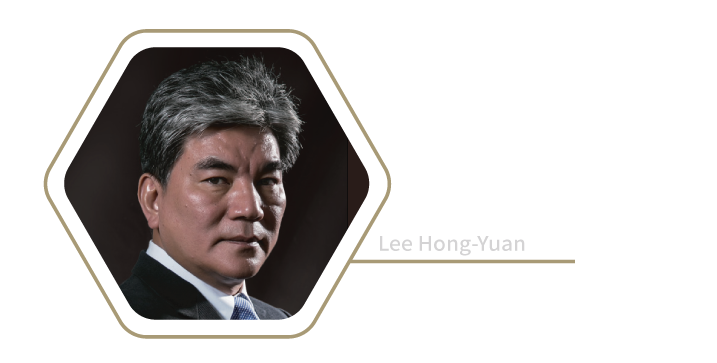
Professor Lee Hong-Yuan
Professor, National Taiwan University, 1986 to-date
Administrator, Water Resources Department, 1997 - 1998
Deputy Magistrate, Taipei County, 2005 - 2009
Minister, Public Works Commission, 2011 - 2012
Minister of Interior, the Executive Yuan, 2012 - 2014
Lee is committed to the promotion of sustainability by combining academic expertise and actionable practicality from a wealth of vast experiences. As the inaugural administrator of Taiwan’s Water Resources Department, Lee’s term of office was a long winning streak that witnessed the wrestling with natural disasters in Taiwan at the onset of Climate Change. Milestone contributions were achieved with the support both in- and outside of his jurisdiction, and, true to form, water resources became more efficiently integrated and alignment became efficiency-driven as well. Through his hands-on style of management, Lee soon realized that traditional engineering falls short of desire in the face of Climate Change for an over-exploited planet Earth. As a result, sustainability is our only way out.
While functioning as the Deputy Magistrate of the then Taipei County, Lee proactively contributed to major public works that won him peer recognition and professional admiration, such as water conservancy projects, disaster prevention and relief, and education for indigenous people and foreign spouses and children.
A special County task force was established in 2007 to help push for critical sustainability-centric projects to take deep rooting through and around the County as a model showcase of urban modernity with an eye on sustainability. It was Lee’s vision to promote a lifestyle of sustainability nationwide from there. Such theme-projects included the Xinchuang-Zhonggang drainage system rerouting, the Greater Taipei Metro Park, and multiple sites for artificial wetlands.
Lee chaired the ad hoc task of setting up the 'Go Green Across the Taiwan Strait Foundation' to promote a portfolio management plan dubbed 'Cooperative Fund for Cross-Strait Green Initiatives' in 2009. The objective was to promote a green lifestyle riding on the catch-phrase of 'Big Benefit for All Mankind. Sustainable Value for Ethnic Chinese'. Thought leaders and opinion influencers from both sides of the Taiwan Strait were approached for joining the initiative to endorse a new co-op model with a catchy banner.
For his remarkable contributions to water conservancy, Lee was recognized as an outstanding alumnus of the University of Iowa in 2008 and further elected to the advisory board of the university's Research Institute of Water conservancy in 2009.

Liberation for Planet Earth
1. Globalization and global warming - mankind's future or end?
2. Is the advancement of science and technology a solution to the issue?
Karma: to expand from an intra-person correlation to that between man and Nature
3. Ask ourselves what we can do as the mantra reflects: Om Mani Badami Om
Irrigate the seed of lotus wisdom inside us
4. Buddha is the Enlightened One who achieved a thorough understanding of life and the universal truth
Dharma is the cosmic law of Nature
The Tao Teh Ching Quote: Man abides by the law of the Earth, the law of Heaven, the law of the Way, and the law of Nature
5. The interrelationship between man and God
From worshiping over faith to dialogue
From a partnership to a shared power of rule
6. Liberation for Planet Earth
A concrete demonstration of Dharma: how does Climate Change involve individuals?
Water footprint, carbon footprint
A journey of a thousand miles begins with lifting the feet
7. How leading religions of the world have achieved changes
The LJM and the University for Life & Peace:
Endeavors in helping the southeast Asian developing countries elevate local vocational capabilities; low-carbon farming; micro bank loans, and from poverty-lifting to religious promotion
Christianity: Tunghai University
The Tung Da Creek; circular economy, and low-carbon campus
Catholicism: Fu-Jen University
Campus planning overhaul in favor of a low-impact development; rainwater recycling and experience-sharing with more than 1,000 Catholic universities around the world
The Chinese Buddhist Association:
Promoting an interfaith alignment with emphasis on ‘leading by example’ in promoting a circular economy by beginning with inventory checking of water and carbon footprint while moving toward low-carbon alternatives. World-facing self-check is a built-in mechanism.
8. What follows is my great vow as a practicing Buddhist in the laity
‘Gate gate pāragate pārasaṃgate bodhi svāhā’. Let's make a collective effort to reach the other side filled with wisdom.

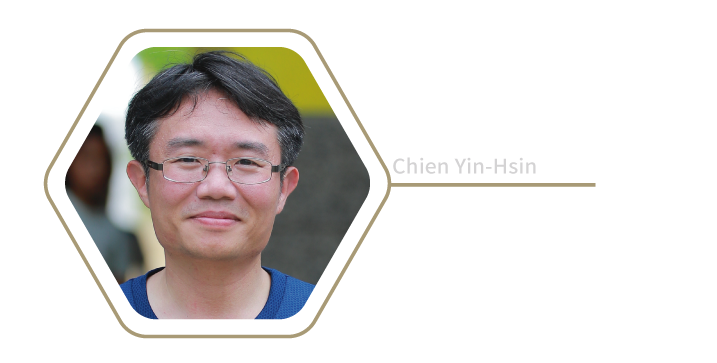
Instructor Chien Yin-Hsin
Chien Yin-Hsin / Instructor, National Lo-Tung Commercial Vocational High School
A doctoral degree holder from the Department of Ethnology of National Chengchi University, Chien is an instructor teaching at the National Lo-Tung Commercial Vocational High School and an environment-friendly farmer in her freetime. Her research work focuses on patriarchal temples of deities of Taiwan’s folklore belief, while paying attention to folklore faiths in Chinese communities around the world. She has published numerous papers on the subject of folklore faith and blended her research finding into her teaching as well as social networking.
(1) The Temples and Worship of Hokkien Migrants in Hong Kong, Issue#41 of Academic Ethnology, NCCU Press, Taipei, 2018
(2) Patriarchal Temples in Taiwan, Issue#30 of the Thinking’ Magazine’s special issue: Contemporary Transfiguration of Religions, United Daily Publishing, Taipei, 2016
(3) Authorities, Intermediate and Cross-Border: the Patriarchal Temples of Ethnic Chinese’s Folklore Belief in Singapore and Malaysia, Issue#7 of the Studies on Chinese Religions, NCCU Press, Taipei, 2016
(4) Burning Incense, Crossing Borders and Clubbing – On Inter-Temples Networking as Reflected in the Holy King of Kai-Zhang Worship in the Lanyang Plain, published as a paper with the title the Religion & Faith in Yilan and collected in the Annals of the 12th Academic Seminar organized by the History Archives of Yilan County for its ‘Yilan Studies’ in 2018
(5) The Deities & Temples Involved the Indigenous People in the Lanyang Plain, paper collected in the Annals of the ‘12th Sino-Japanese Forum on the Indigenous People’, NCCU Research Center for the Indigenous People, Taipei, 2019
(6) Authorities, Intermediate and Cross-Border: the Patriarchal Temples of Ethnic Chinese’s Folklore Belief in Singapore and Malaysia were collected into the Research on Overseas Hakkas in Taiwan compiled by Chang Han-Bi and Hsiao Hsin-Huang, Chuliu Publisher, Taipei, 2021
Current position: Secretariat Chief Executive, National Lo-Tung Commercial Vocational High School

The Changing Habit of Spirit Money Burning and Eco-friendly Farming
The practice of the Guanyin Ecology in the Local Beliefs in Taiwan
The paper features the notion of local Guanyin belief that ‘the Pure Land of Bodhisattva Guanyin is the Pure Land where one’s mind is purified’. The idea was interpreted with two examples respectively in Keelung where a village temple modified its tradition of spirit money burning for environmental protection and in Yilan where villagers of a farming community opted for eco-friendly farming. The two aforementioned practices illustrate the profound influence of ‘Guanyin Pure Land’ to Taiwanese society.
Lin Hsuei Temple, the village temple in Keelung that worships Chen Ching-Gu - a female deity of Hokkien folklore known for her power of subduing demons- transformed the spirit money burning tradition into an alternative presentation of special banknotes to help decrease pollution caused by the burning ritual. The paper discussed in detail the development of the three types of banknotes, namely the ‘Dragon Voucher’, ‘Longevity Voucher’, and ‘Silver Voucher’, highlighting the historic significance that local faiths in Taiwan are gaining environmental awareness year by year.
The paper then examined the farming practice of two villages in Yilan County— the Hsing Chien village in San Hsing and Shen Gou village in Yuan Shan. The former worship Koxinga and the ‘Guanyin Buddha’ as their major heaven protectors. In the hope of honoring the teachings of the two gods, members of the rural community came up with the decision to implement eco-friendly farming. Villagers of Shen Gou village share the same goal as they want to honor the Three Great Emperors— the highest Celestial Deities of Taoist religion to govern the Heaven, Earth, and Water spheres. As the elders who share their farming experience to the youth in the village are faithful to the ‘Guanyin Buddha’, the practice also presents an illustration of the ‘Guanyin Pure Land’.
The present paper availed itself of the results of its regional field survey findings to reach the conclusion that the Guanyin belief found modern day ramification in the two examples presently discussed. Two separate locations and two wildly different scenarios but the Guanyin Pure Land was the common denominator that serves to highlight the significance of the Guanyin belief in our pursuit of sustainability.
Keywords: Guanyin Buddha, Guanyin Pure Land, spiritual money, eco-friendly farming
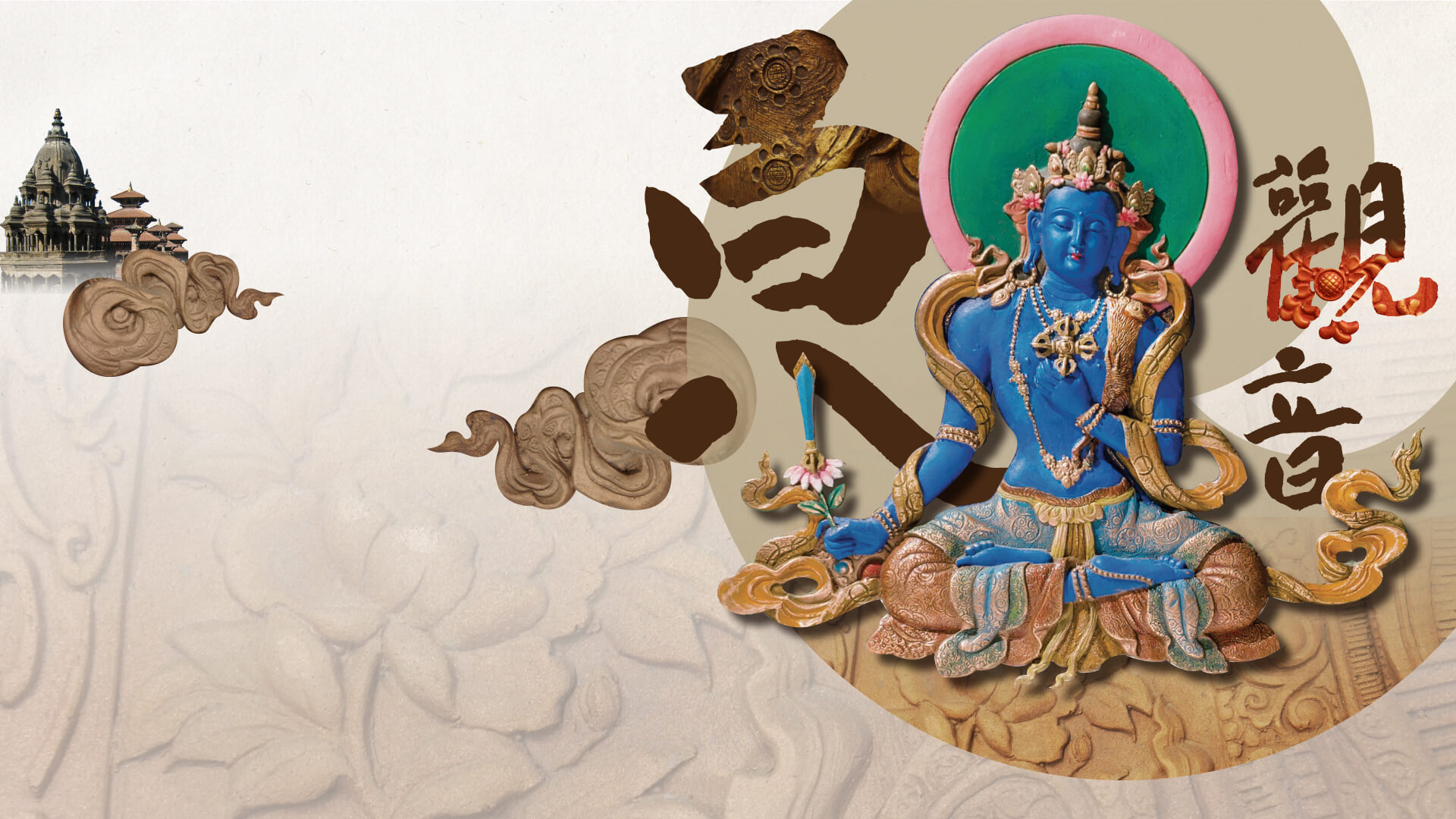
4th International Symposium on Guanyin Culture 2022
The 4th International Symposium on Guanyin Culture took place in New Taipei City, Taiwan and Nagoya, Japan this year on September 28th. Facilitated by video conference, scholars and audiences connected, shared and discussed topics including environmental protection as an ideology of Guanyin.
